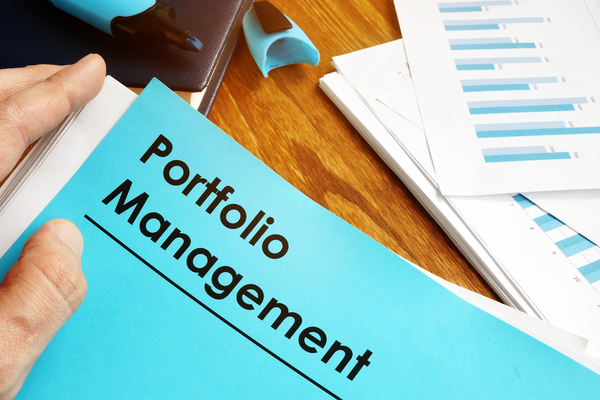
“Diversification is the only free lunch in investing,” is a popular saying on Wall Street that dates back to the 1950s. And there is a reason why people are still saying it today.
In this guide, you will learn what portfolio diversification is and how you can diversify your digital asset portfolio.
What is Portfolio Diversification?

Portfolio diversification means investing a range of different assets to reduce the overall risk of your portfolio. In other words, portfolio diversification is a fancy way of saying do not put all your eggs in one basket.
If you were to invest only in Tesla stock, for example, the value of your investment portfolio would fluctuate greatly and could go to zero if Tesla goes bankrupt. However, if you were to invest in Amazon, Apple, Google, Microsoft, and Tesla, you could benefit from the potentially strong performance of the Tesla stock while reducing your risk by diversifying into more established tech companies.
That is the main principle of diversification. You reduce your overall risk, while still keeping upside potential.
The same principle also applies to digital assets. If you want to build a long-term investment portfolio because you believe in the future value of this new asset class, it would be prudent to buy not just bitcoin but also other digital currencies and tokens with a bright outlook.
How to Diversify a Blockchain Portfolio
Now that we have explained what diversification is, let’s talk about how to build a diversified blockchain portfolio.
Arguably, the simplest diversified digital asset portfolio you can build is an equally-weighted portfolio with holdings in bitcoin (BTC) and ether (ETH). Bitcoin and Ethereum’s ether are the two largest digital assets by market capitalization and are also among the most liquid.
[table id=207 /]
To build this portfolio, you could use a platform such as Coinbase to buy both bitcoin and ether, and then store your holdings in a secure hardware wallet. This portfolio would provide you with exposure to the two most promising in the market.
If you would like to diversify your portfolio further, you could add more of the best performing digital assets into the mix. However, if you want to remain on the conservative side as an investor, you will probably still hold the majority of your portfolio in bitcoin.
For example, you could build a portfolio composed of bitcoin (BTC), ether (ETH), ripple (XRP), litecoin (LTC), and binance coin (BNB) where BTC remains at 50% and the remaining four assets are equally-weighted at 12.5 percent each.
[table id=208 /]
To build this portfolio, you could sign up to a digital asset exchange such as Binance, Poloniex, or Kraken and purchase each of these assets before transferring them off-exchange into a personal wallet that only you control.
If you would like to go beyond the top ten assets by market value, you could look into a range of different projects and “coin pick” the ones you like the most, in addition to bitcoin. For example, you could create a portfolio that holds 50 percent in bitcoin (BTC), and the rest in tokens issued by smart contract platforms, if you would like to “go long” the smart contract industry. Such a portfolio could look like this:
[table id=209 /]
When it comes to building diversified portfolios, it comes down to you what type of asset exposure you want.
For new blockchain investors, a simple split between the top assets is most likely the best choice. For more experienced investors, there are opportunities to build portfolios composed of different types of assets, such as digital currencies, utility token, and security tokens, as well as different sector exposure, such as enterprise chain tokens, privacy coins, and exchange tokens.
A Real-World Diversified Digital Asset Portfolio

Note: Readers should note that sample portfolios included in this section are for demonstrative purposes only. This is not intended, nor should it be taken, as financial advice.
Ed Handschuh, co-founder and CEO of the blockchain investment firm 1Konto, believes in building a diversified digital asset portfolio.
“I would split it up based on function and what they [the investment assets] overall represent. Think Bitcoin and Ethereum are very much infrastructure and large-scale payments… Then you obviously have stablecoins, which if you’re looking to keep an all-digital portfolio, having some of that stability there as a buffer, especially given the market these days, is prudent.”
While building a hypothetical portfolio, Handschuh suggests a division of assets along these lines:
- Bitcoin – Around 30 – 35 percent of holdings, because it’s the most stable project and the one most likely to draw new capital.
- XRP – Around 15 percent of holdings, because of the project’s stability and draw.
- Stellar – Around 15 percent of holdings, because of its status as a high-utility project with major backers.
- Ethereum – Around 10 percent of holdings, because of its longevity and value.
- A mix of top 15 projects – The remainder of holdings spread evenly. However, Handschuh notes that he would avoid projects with major “drama” such as Bitcoin Cash and SV, as this can indicate future instability. He would make sure to have this section of his portfolio represent stablecoins as well such as USD.
_600x.jpg)
The Bottom Line
Diversification – when done right – allows you to reduce your portfolio’s risk while keeping your expected returns high.
Simply put, it’s better not to put all your eggs in one basket. That holds true for stocks as well as digital assets.
Related Articles
- Dollar-Cost Averaging: The Smart Way to Invest in Bitcoin
- Best “Blockstocks” Rated and Reviewed
- The Blockchain Believers Portfolio
If you want to receive our FREE Blockchain Investor Daily, subscribe to the Bitcoin Market Journal today!

